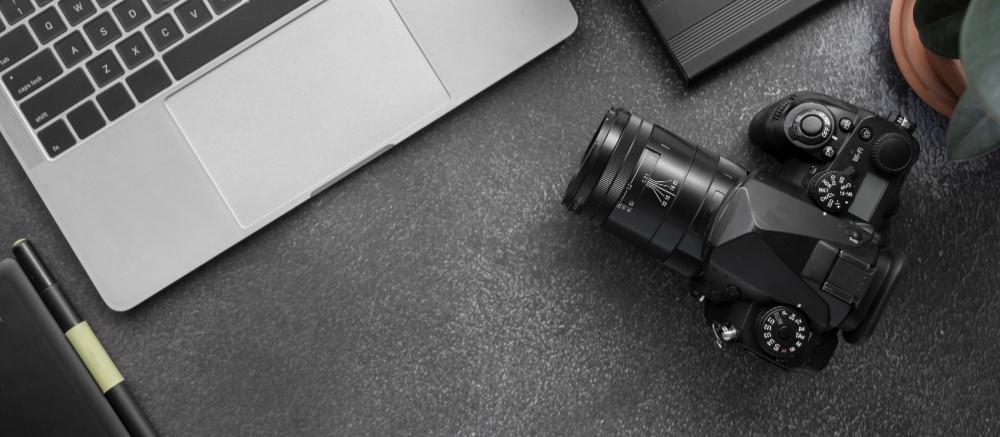

Have you ever gone for a walk, captured a stunning photo, and thought, “I could do this for a living”? Maybe at a wedding, you snapped a beautiful candid moments that the official photographer missed? Or perhaps a sibling pressured you into a makeshift Vogue cover shoot?
Moments like these inspire many to pursue a career in photography.
No matter your inspiration, you’re here because you’re ready to turn your passion into a photography business. But like any business, it’s not as simple as snapping pictures and calling it a day.
Don’t worry – this guide will walk you through everything you need to know to start your photography business, from choosing your niche to planning for growth.
Here is what we’ll cover:
- Ideation
- Market research
- Essentials to start a photography business
- Funding and forecasting
- Growth and scaling
Ideation
All businesses start with an idea.
If you’re reading this, you probably already have a few concepts for your photography business. The next step is to explore various photography niches and assess their practicality and potential.
Here are some popular types of photography businesses to consider:
1. Photojournalism
Photojournalism involves capturing images that tell a story, often for news outlets. You might work freelance or for a media company, covering areas like sports, politics, or events.
Skills required:
- Tenacity for getting the perfect shot
- Confidence in your abilities
- Willingness to travel and work odd hours
Pros
- A wealth of fields to specialise in
- Can work for yourself or for others
- Potential for high earnings with sought-after images
Cons
- A highly competitive industry
- Unpredictable income
- Challenging work environments
2. Commercial photography
Commercial photography involves creating images for business purposes, such as websites, ads, and product packaging. Commercial photography is in demand year-round, making it a lucrative option.
Skills required:
- Ability to build client relationships
- Ability to capture a client’s vision
Pros
- Stable demand
- A potential for high pay
Cons
- A highly competitive industry.
- Can be hard to enter the industry
- Can require extensive travel
3. Studio/ portrait photography
This type focuses on photographing people, either in a studio or on location. It’s ideal for family portraits, fashion shoots, and more.
Skills required:
- Good communication and patience
- Well put-together portfolios
Pros
- Great local focus with minimal travel
- Flexible in setup (whether home studio or rental)
Cons
- Studio costs can be expensive
- Sector can be competitive in urban areas
4. Event photography
Event photographers capture memorable moments at weddings, concerts, and corporate events. Specialising in a niche like weddings can help you stand out.
Skills required:
- The ability to capture candid moments (discreetly!)
- Strong organisational skills
Pros
- High earning potential
- Lots of variety of work
- Experience different events and cultures
Cons
- Seasonal demand, with quiet times in the year
- Requires extensive travel
- Highly competitive.
Market research
Once you’ve settled on a niche, it’s time to research your market. This step helps you understand what clients want, how much they’re willing to pay, and who your competitors are.
Start by summarising your business idea in one sentence. For example:
- “Wedding photography for large-scale events.”
- “Family portraits in a home studio setting.”
Now, search online for similar businesses in your area. Look at their services, pricing, and portfolios. Join photography forums and ask for advice – these communities are rich with insights.
Here’s what we learned from researching wedding photographers:
- Tier 1 (£400–600): 5-hour coverage, including ceremony and reception highlights.
- Tier 2 (£700–900): 8-hour coverage, from ceremony to the first dance.
- Tier 3 (£1,000+): Full-day coverage, often including videography.
Photographers often offer add-ons like albums or prints. Understanding these extras can help you structure competitive packages.
Once you’ve completed your research, you’ll be ready to start turning your ideas into a business.
What do I need to start a photography business?
At this stage, you might refine your initial ideas or even generate new ones. Let’s break down the essentials you’ll need to launch your photography business, including financial planning for these requirements.
Equipment
Photography is an equipment-heavy industry. For a wedding photography business, you’ll need:
- Camera(s): High-quality mirrorless cameras are the go-to for many professionals. Having at least two is advisable to avoid downtime during critical moments.
- Lenses: Different lenses are crucial for capturing a variety of shots, from wide group photos to intimate close-ups.
- Flashes/ Flashguns: Proper lighting is essential, especially in dim venues. External flash units can make all the difference.
- Spare batteries and Memory Cards: Long events require extensive storage and power. Always have extras.
- Tripod/Monopod: Useful for steady shots, particularly during the ceremony or posed group photo.
- Car: Essential for getting to and from venues with your gear.
Insurance
Insurance protects you, your clients, and your business. Here are key policies to consider:
- Photography Equipment Insurance: Covers theft or damage to your gear.
- Equipment Breakdown Insurance: This will protect against any electrical or mechanical failures.
- Public Liability Insurance: This can cover injuries or damages caused by your business.
- Professional Indemnity Insurance: Protects against claims of negligence or breach of contract.
- Business Car Insurance: Ensures coverage for work-related travel.
Marketing and Sales
Attracting clients is crucial, and a strong online presence is non-negotiable.
Your website
A well-constructed website serves as your primary sales channel. Key elements of a website include:
- Portfolio: A photographer’s portfolio is their main selling point. Here you can showcase your best work.
- Pricing: Transparent pricing information for different offers (packages and services).
- Availability: Allowing potential clients to see your schedule and book with you directly.
When you start your website, it’s unlikely you’ll have many visitors. So how can you increase your site traffic?
- SEO Optimisation: Ensure your site ranks well for local search terms like “wedding photographer [your area].”
- Social Media: Leverage platforms like Instagram and Facebook to share your work and connect with clients.
- Paid Advertising: Consider Google Ads or location-based social media ads to boost visibility.
Non-paid methods, such as engaging in community forums or posting in local Facebook groups, can also be effective in building brand awareness.
With these processes in mind, you’ll soon see some new visitors on your website!
Pricing and payment terms
Setting competitive and clear pricing for your photography business is vital. Here’s an example structure for a wedding photography business:
- Tier 1 (£400): 5 hours of coverage, from the ceremony to the speeches. Includes edited photos hosted on a client-accessible website.
- Tier 2 (£600): 8 hours, covering from the ceremony to the first dance. Includes a framed photo of the first dance.
- Tier 3 (£800): Full-day coverage, from breakfast to the first dance, plus a custom photo album.
To ensure steady cash flow, require a 20% deposit upon booking, with the remaining balance due 1-4 weeks before the event. Clear payment terms, outlined in a client contract, help avoid misunderstandings and protect both parties.
By carefully structuring your services and payment terms, you position your business competitively while maintaining financial stability!
Funding and forecasting your photography business
Understanding your finances is crucial to your business’s success. This section focuses on testing the viability of your ideas, so don’t be discouraged if something doesn’t seem as profitable as you’d hoped – better to find out now than years down the line!
Funding your business
One of the biggest considerations when launching a business is funding. How you secure the necessary capital will determine what’s feasible. You could use personal savings, loans, grants, or attract an investor or a combination of these options.
Let’s continue using the example of a wedding photography business. Since you’re starting from scratch, you need to be realistic about pricing. As a new entrant, you can’t charge what an experienced photographer might, so we’ll focus on building value and gradually raising prices.
Forecast with the right tools
Finances can be complex, but financial modelling tools like Brixx simplify the process. Brixx allows you to model different scenarios, visualize your financials, and generate real-time reports.
For instance, wedding photography is highly seasonal, with most bookings occurring in spring and summer. By forecasting cash flow using Brixx, you can plan for slower months and manage expenses accordingly.
Income forecasting
Let’s start breaking down the income streams.
- Wedding packages (tiers): Each tier represents a different level of service, from basic to premium.
- Add-ons: Extras like photo albums, prints, and frames, which can be outsourced to avoid additional equipment costs.
Using Brixx, you can account for deposit payments made months before weddings and balance payments due closer to the event. You can also delay offering the most comprehensive package until you’ve gained more experience, using the timeline feature to plan your start date.
Cost forecasting
When it comes to costs, there are two types: startup and running costs.
Startup costs
These are one-time expenses necessary to get the business running:
- Domain and hosting fees for my website
- Insurance policies
- Equipment purchases
Running costs
These are ongoing expenses to maintain operations:
- Insurance renewals
- Travel costs
- Software subscriptions for photo editing
- A modest salary of £2,000 for the first year
Most startups aren’t profitable in their first year, so you can reinvest early earnings and adjust your salary as the business grows.
Asset management
Assets are essential for any photography business. You might already own a camera and computer, but you’ll likely need to invest in additional lenses for different types of shots. Brixx helps to track these asset purchases and their impact on the cash flow.
Funding strategy
With the startup and running costs laid out, you have now determined that you’ll need £2,500 to launch. This can be done by investing £1,500 of your own savings while taking out a £1,000 loan to cover the rest.
Forecast summary
Using Brixx’s dashboard, you can visualize your expected income, costs, and seasonality. This tool also generates the three key financial reports – cash flow, profit & loss, and balance sheet – giving you a clear picture of the business’s financial health without requiring advanced accounting knowledge.
Growing and scaling up your photography business
Congratulations – you’ve launched your business! Now it’s time to grow. Here are some tips:
- Be ambitious: Take calculated risks and seize big opportunities to expand your business.
- Be mindful: Maintain a healthy work-life balance to avoid burnout.
- Be smart: Plan for the unexpected, and stay prepared for growth-related challenges.
Starting a business is no small feat, but with careful planning, passion, and persistence, you can build a thriving photography business.
Ready to start? Try Brixx for free and see how easy financial forecasting can be!















